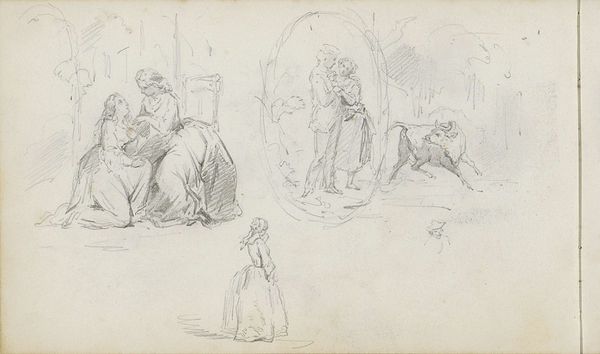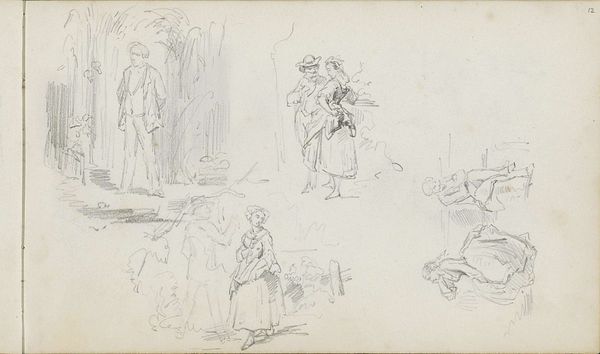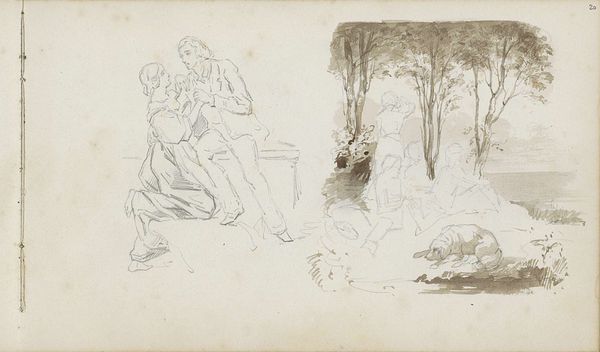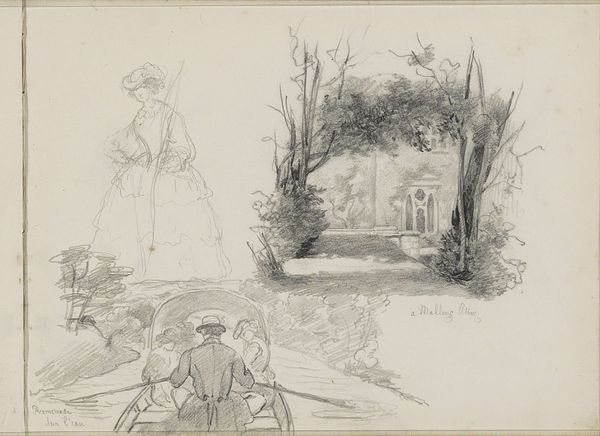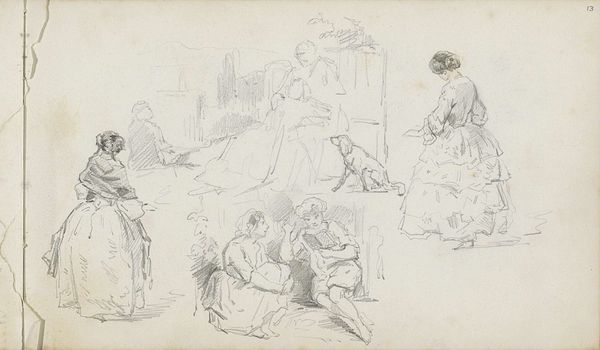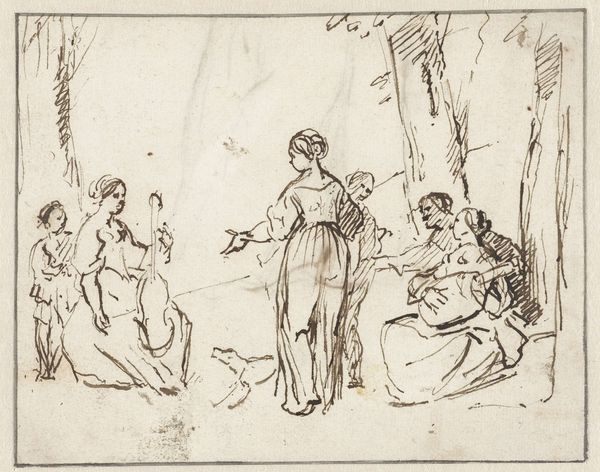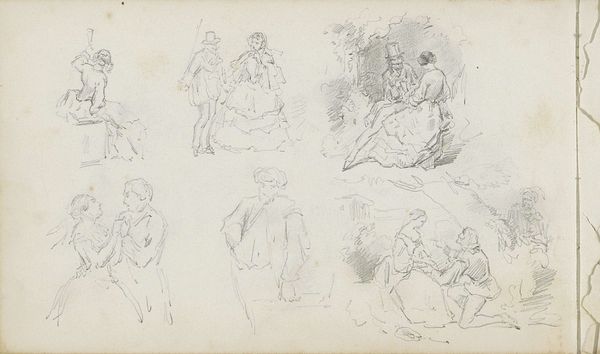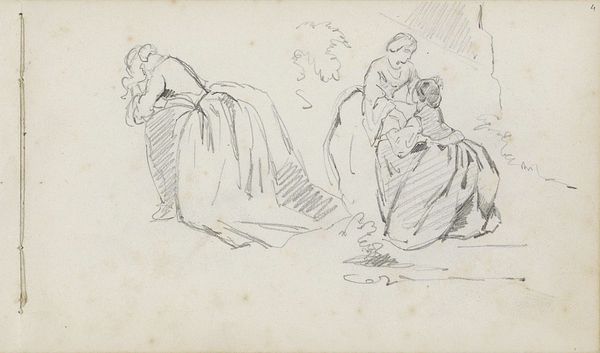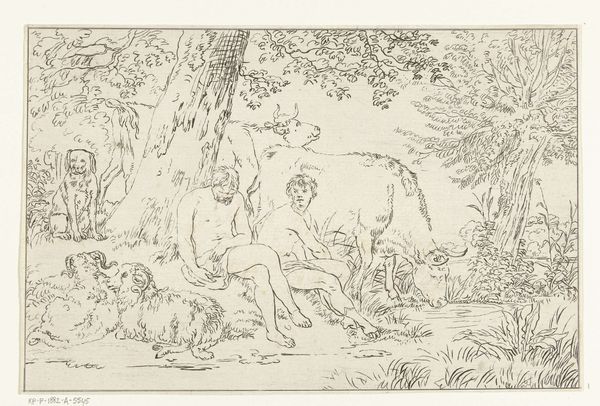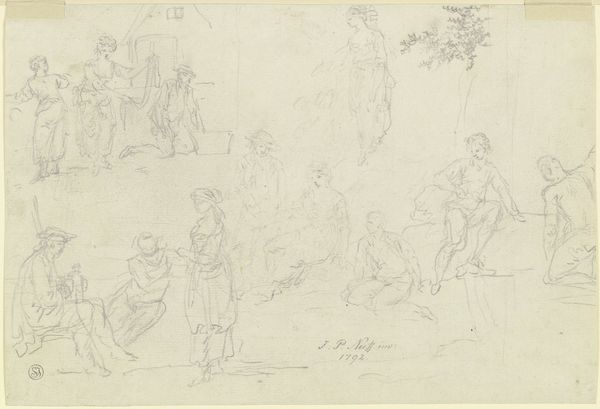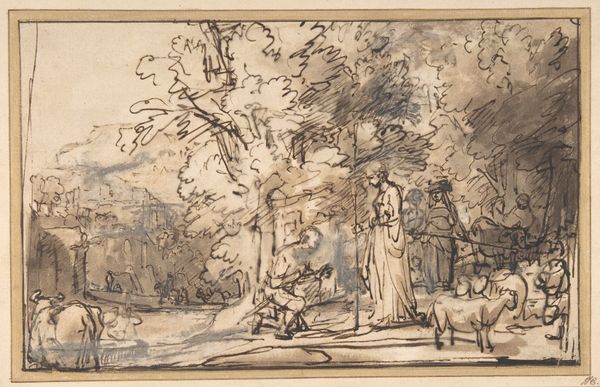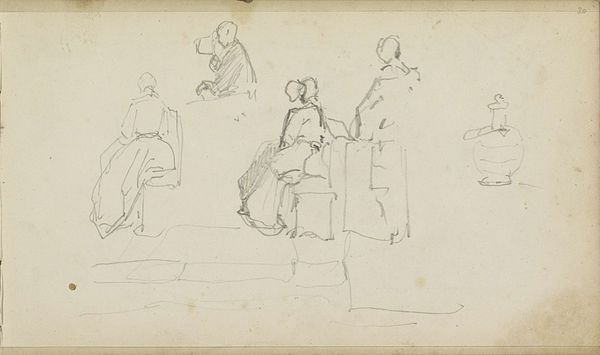
Studieblad met (naakte) figuren en de oprijlaan van een landhuis c. 1840 - 1860
0:00
0:00
charlesrochussen
Rijksmuseum
drawing, pencil
#
portrait
#
drawing
#
amateur sketch
#
toned paper
#
light pencil work
#
quirky sketch
#
pencil sketch
#
incomplete sketchy
#
landscape
#
figuration
#
personal sketchbook
#
romanticism
#
pencil
#
sketchbook drawing
#
academic-art
#
sketchbook art
#
initial sketch
Copyright: Rijks Museum: Open Domain
Curator: This is a page of studies, or perhaps a leaf from a sketchbook, by Charles Rochussen, dating from approximately 1840 to 1860. It's currently held here at the Rijksmuseum. What strikes you first about it? Editor: Well, the variety of subjects and techniques here makes me wonder what was on Rochussen's mind at the time. Is this playful exploration, academic study, or something else entirely? There is some dark wash, with light pencil work of nude or nearly nude figures, and a beautiful allée. It feels intimate, even voyeuristic, to glimpse this. Curator: Absolutely, I find the juxtaposition fascinating. The inclusion of classical nudes amidst a landscape populated with clothed figures invites inquiry into the 19th-century gaze and the social norms of the era. Consider, for instance, the idealized form versus the depiction of everyday life in the drawing of the oprijlaan. Editor: That's a sharp contrast. I notice the figures aren't engaged with one another. Is the romantic era over, and is there an element of alienated bourgeoisie captured here in pencil? Rochussen, though successful in his time, hasn't remained particularly famous in ours. Curator: That is an important consideration, thinking about what constitutes ‘success’ and what stories get valorized in the artistic canon. His images catered to a very specific clientele, which has class implications but also ones related to subjecthood. One of the most fascinating aspects to me is Rochussen’s capacity for observing the nuances of the everyday within such a formal academic approach to his sketch studies. The avenue, in particular, seems very well-observed; he has people picnicking in small groups, which I find intriguing. Editor: It really highlights that moment where public life and private life meet. But that carefully cultivated landscape... it feels like a stage set, and his figures become performers. I’m thinking about the theater and gender performativity within that context. How might those relate? Curator: I’m thinking, too, about those gendered power dynamics you just alluded to. Is there perhaps some kind of commentary here on the way society expects us to behave and what role does wealth and power play? Editor: Rochussen’s skill really shines in portraying those little interactions! This opens many doors to interpreting his broader cultural environment and understanding our own contemporary attitudes. Curator: Precisely. These images challenge us to consider our biases, the values we place on art, and how history influences our present. It makes me rethink what art and society can do together to inspire thought.
Comments
No comments
Be the first to comment and join the conversation on the ultimate creative platform.
